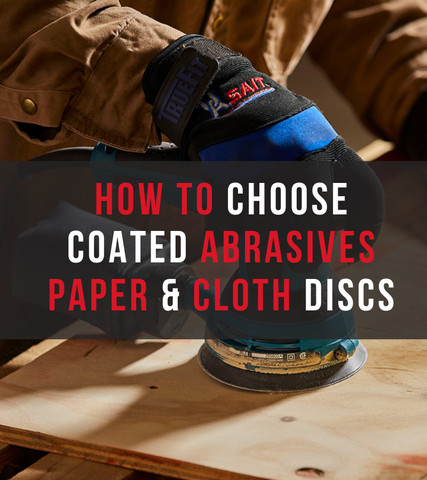Posted by Mark Schieber on 2nd Feb 2024
United Abrasives: Choosing the right Paper or Cloth Discs for the job
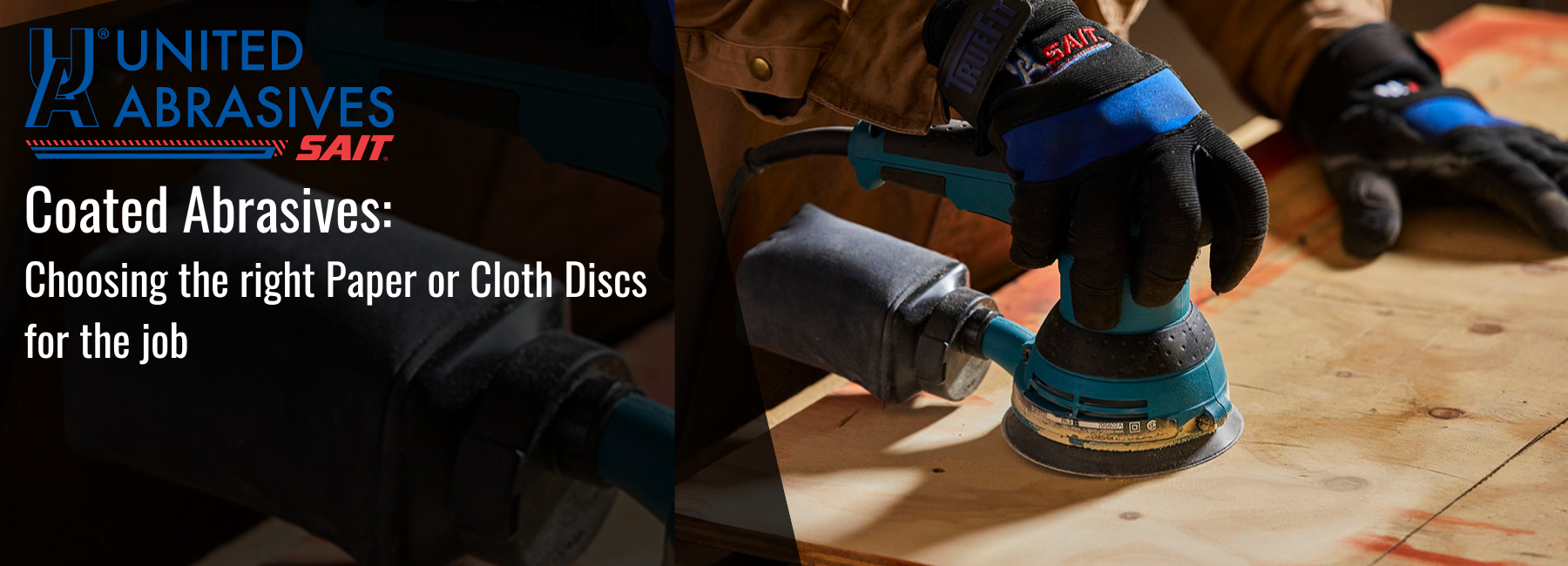
A coated abrasive is a product that consists of a thin layer of abrasive grain attached to a substrate such as paper, cloth, etc. Both paper and cloth abrasive discs distinguish themselves as a remarkably versatile and highly sought-after option in the realm of finish sanding. The versatility of abrasive paper and cloth discs lies in their ability to adapt to various surfaces and materials, making them indispensable for a myriad of projects. Whether you're working on wood, metal, or other surfaces, these discs prove to be invaluable in achieving smooth and polished results.
Hook & Loop Backing or PSA Backing, which one should you choose?
The choice between Hook & Loop (H&L) and Pressure-Sensitive Adhesive (PSA) discs is an important step to figuring out the best solution for your manufacturing or maintenance process. Each present a distinctive set of advantages and drawbacks. Let's take a closer look.
Hook & Loop Discs Provide Secure Grip, Seamless Transitioning
Utilizing the Velcro-backed hook and loop system, these sanding discs employ small hooks and loops for a secure attachment to your orbital sander. Beyond ensuring a steadfast grip during sanding, this innovative system allows for easy disc removal. This proves particularly advantageous when reusing discs or swiftly transitioning between different abrasive types. In our experience hook and loop abrasives are better suited to use with dust extraction.
The benefits of Hook & Loop discs include a consistent and secure grip throughout sanding sessions, providing ease in transitioning between different grits for varied sanding levels. These discs come in a range of sizes and grit types, offering versatility for diverse applications. Additionally, their cost-effectiveness is notable, as the discs can be reused multiple times. On the downside, there is a potential for loosening as the hooks wear down over time. Back up pads do wear out.
Hook & Loop Backing Pads
These pads are commonly used with paper backed discs and usually feature either a 5/16-24" male thread (on 5" and 6" orbital sander pads) or on larger pads a female 5/8-11" threaded arbor hole is often used.
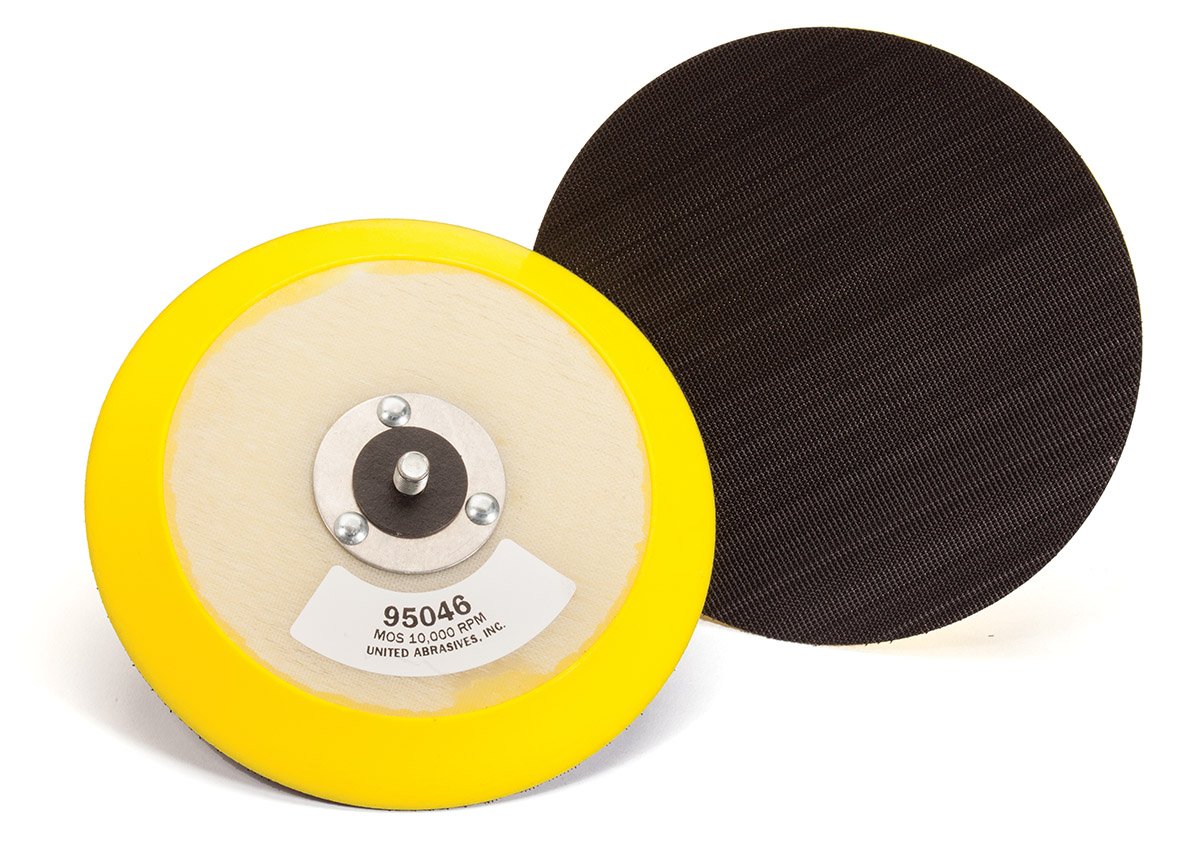
PSA Discs: Simplified Application, Budget-Friendly
Sanding discs equipped with Pressure-Sensitive Adhesive (PSA) offer a straightforward application process – simply peel away the backing and apply. United Abrasives provides PSA discs in different materials, including film, cloth, and paper, catering to various budgets and project requirements. Cloth and film-backed options provide increased strength and tear resistance, suitable for heavy-duty sanding, while paper-backed discs excel in lighter sanding and finishing tasks. Paper discs are often the value play.
PSA discs guarantee a secure hold during sanding operations and accommodate various budgets, providing flexibility in material selection. However, a notable disadvantage is that once removed, PSA discs cannot be reattached, rendering them more suitable for larger jobs where the same disc is utilized until it wears out.
PSA Backing Pads (Vinyl Face Pads)
These specially designed pads are for use with PSA adhesive backed sanding discs. 1/4″ Shank pads are commonly used with die grinders, while 5/16-24" threaded pads are for use on dual action/random orbital sanders. 5/8-11" pads are generally used on larger right angle grinders/sanders.
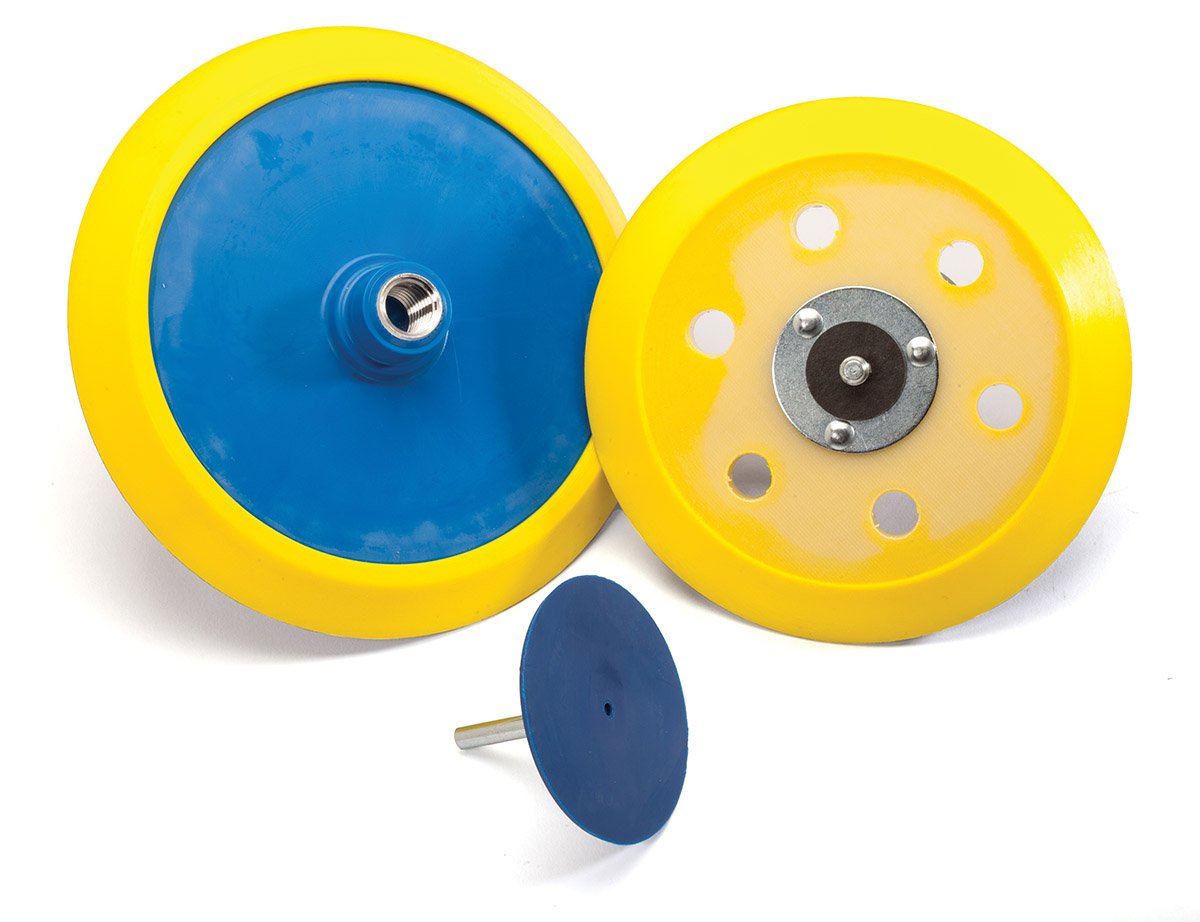
Components of Coated Abrasives – Abrasive Grains
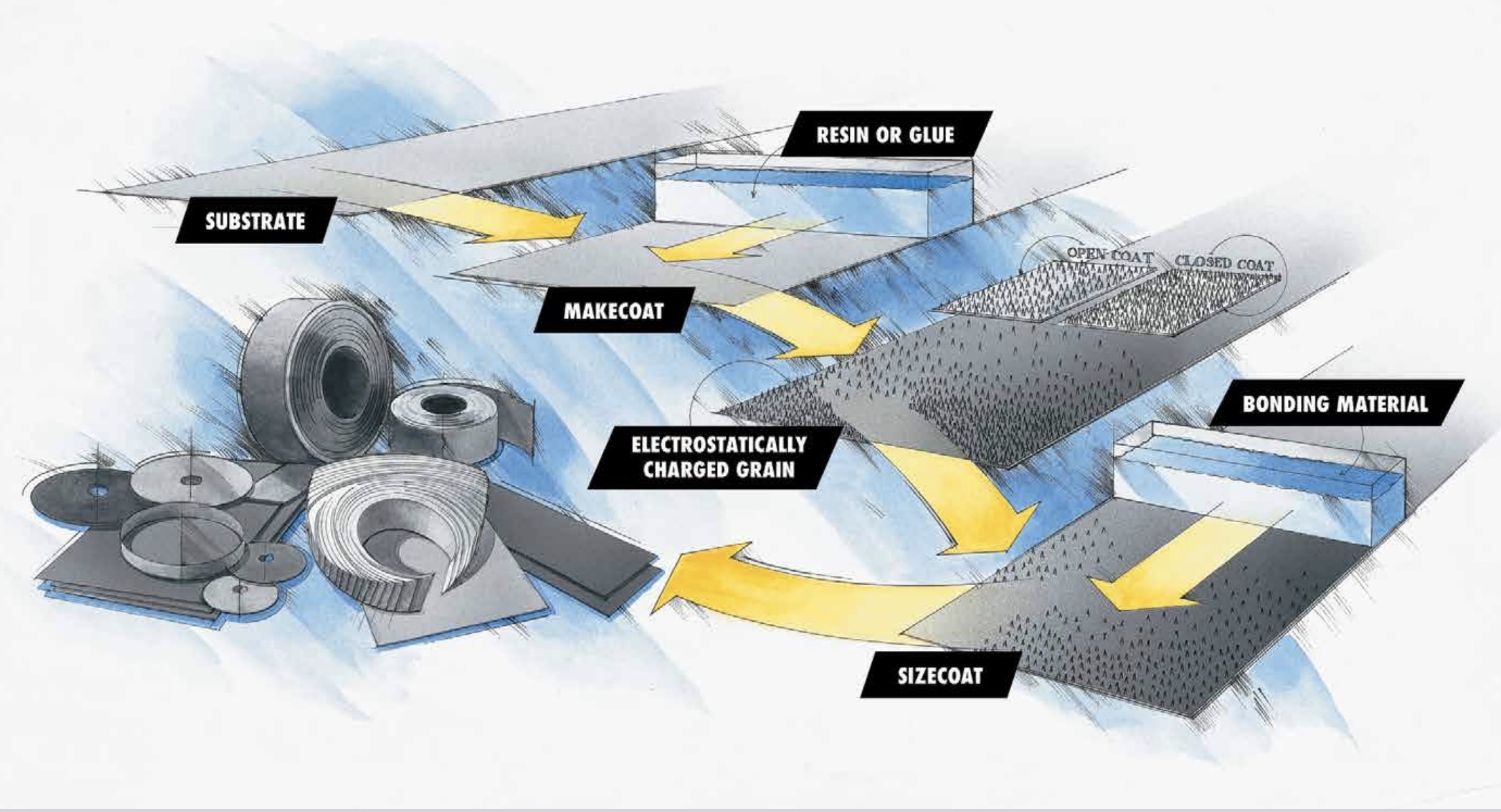
Aluminum Oxide: One of the most widely used abrasive grains, aluminum oxide boasts a tough, blocky shape, making it ideal for high-speed grinding and finishing of metals, wood, and other materials with high tensile strength. Its resistance to fracturing positions it as a superior choice in scenarios where durability is paramount. It was one of the most general purpose abrasives and dates back to the 1920's.
Zirconium: Characterized by its very fine, dense, man-made crystalline structure, zirconium excels in aggressive stock removal. Its unique self-sharpening feature contributes to an extended lifespan, particularly in heavy stock removal operations. This grain is a valuable asset for industries requiring efficiency in material removal. Zirconia abrasives were invented by Norton in 1971.
Ceramic: Considered a high-performance, man-made abrasive material, ceramic grains exhibit a very uniform, high-density grain structure. This structure makes them exceptionally durable and self-sharpening, resulting in longer life and cooler cuts. Ceramic abrasives shine in grinding tough materials that challenge other grains. Ceramic abrasives excel in use with exotic and high temperature alloys.
Silicon Carbide: Known for its hardness and sharpness, silicon carbide is a man-made abrasive well-suited for non-ferrous and non-metallic materials such as concrete, marble, wood, and glass. Its friable nature allows for faster cutting under light pressure compared to other coated abrasive grains. This makes silicon carbide a top choice for specific applications. Silicon carbide has a tendency to "load up" less than some of its abrasive relatives.
Garnet: Derived from natural aluminum oxide, garnet possesses a relatively sharp but weak bonding structure. While it finds a place in woodworking, its inconsistency compared to synthetic alternatives limits its use in metalworking. Garnet is known for its quick dulling, making it better suited for certain applications. Garnet is less and less commonly found in industrial grade abrasive manufacturing these days.
Understanding the characteristics of these abrasive grains is crucial in selecting the right coated abrasive for a given application. Whether it's the toughness of aluminum oxide, the efficiency of zirconium, the high performance of ceramic, the sharpness of silicon carbide, or the specific applications of garnet—each grain brings its unique advantages to the world of coated abrasives. As industries evolve, the utilization of these materials continues to shape the landscape of manufacturing and finishing processes.
Understanding Grit Ranges
The grit number of sandpaper is typically printed on the back of the sandpaper itself. This makes it easy for users to identify and select the appropriate grit for their specific needs. The grits span a wide range, extending from 12 (very coarse) to 2,000 (very fine), offering versatility in catering to diverse applications. Here are some common grit ranges and their applications:
- 36-100 Grit: This particularly coarse range is well-suited for applications demanding the removal of substantial amounts of material. Its effectiveness in rounding off edges makes it an optimal choice for initial shaping in metalworking projects.
- 100-180 Grit: Positioned in the medium grit category, sandpaper within this range proves versatile and apt for general-purpose metal sanding. Balancing coarseness and fineness, it stands as a reliable option for various applications
- 180-220 Grit: Falling under the fine grit classification, this range is ideal for roughening metal surfaces in preparation for painting or as a preliminary step before subsequent sanding with ultra-fine grits. It ensures a smooth foundation for the finishing touches in metalwork.
- 220-400 Grit: Popular #320 Grit is recognized as ultra-fine, these abrasives are used for achieving a nearly flawless and closer to polished texture. Widely employed for the final stages of sanding, this grit delivers a refined surface.
Backing Materials – Substrates
Two major types of backing materials are specialized technical papers and cloth, each offering distinct characteristics. Understanding the distinctions between paper and cloth backings empowers users to make informed decisions, selecting the most suitable substrate for their specific abrasive needs.
Other backing materials include Fiber backing and Combination backings. Fiber backing is a tough vulcanized material made from rag stock. This backing is usually used for abrasive fiber discs. Combination backing is laminated paper and cloth, and is very sturdy and shock resistant. Combination backings typically are used for a wide range of grits and mounting techniques.
There are also a variety of other substrates such as nylon fiber or screens that can be coated for special applications. Non-woven (AKA Scotch Brite) nylon impregnated with abrasive grain is another substrate that can be used for cleaning, polishing, or blending.
Cloth Discs
Abrasive cloth discs offer a robust and versatile solution for various sanding applications. These discs are constructed with a resilient resin over resin bond, providing exceptional resistance to both heat and moisture. The hot melt adhesive back not only facilitates quick and effortless changes but also minimizes downtime during sanding operations.
To simplify identification and inventory management, the cloth discs are labeled with UPC barcodes. This labeling system streamlines the tracking of discs, making it convenient for users to maintain organized stock. Whether used for wood, metal, or other materials, abrasive cloth discs stand out as a reliable choice, offering durability, flexibility, and efficient performance for a wide range of sanding applications.
Various types of cloth backings, including cotton (e.g., Egyptian), polyester, and polyester-cotton blends, offer versatility in meeting specific needs. Cloth backings are identified by weight and flexibility, providing users with options suited to different tasks.
- "F" Weight (J-Flex): This light and highly flexible cloth backing, identified as "F" weight or J-Flex, is suitable for cleaning, finishing, and polishing applications. Its flexibility makes it ideal for tasks that require precision and intricate detailing.
- "J" Weight (Jeans): The "J" weight cloth backing is highly flexible and well-suited for cleaning, finishing, and polishing, particularly on contour surfaces. Its flexibility facilitates maneuverability on curved or irregular surfaces.
- "X" Weight (Drills): Identified as "X" weight, this cloth backing is medium to heavy, offering increased strength and durability. Its lower flexibility makes it suitable for grinding, deburring, and finishing applications where sturdiness is a priority.
- "H" Weight (Heavy Duty): The "H" weight cloth backing surpasses the "X" weight in heaviness, providing low flexibility and exceptional edge stability. Tailored for heavy-duty grinding and deburring applications, it ensures reliable performance under demanding conditions.
Here are some available Abrasive Cloth Discs:
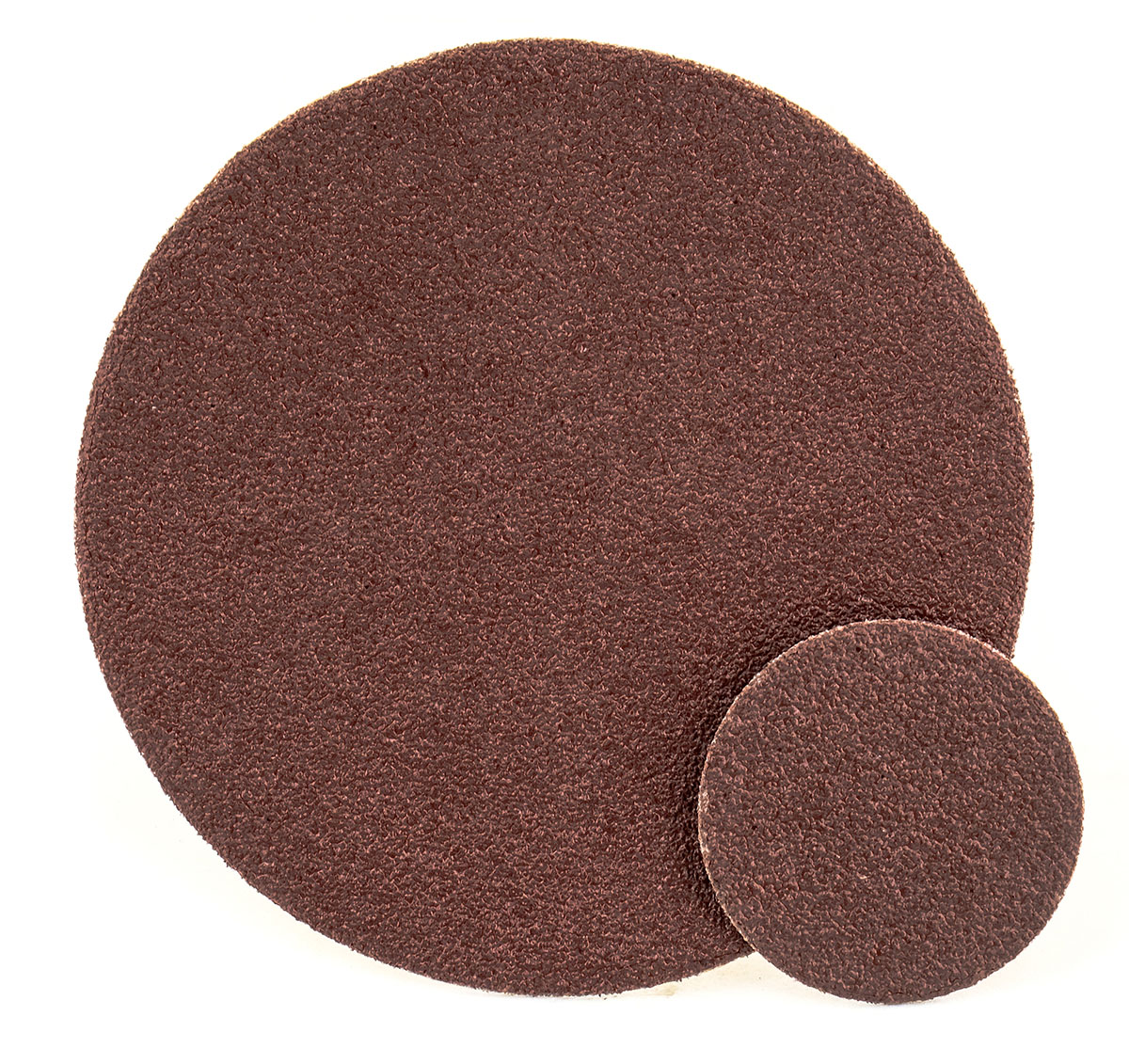
ALUMINUM OXIDE
Individual PSA Cloth Discs
- Aluminum Oxide Grain
- Strong X-weight Egyptian cotton cloth backing
- Closed coat structure

ZIRCONIUM

Individual PSA Cloth Discs
- Premium Zirconium Grain
- Specially formulated X-weight Egyptian cotton cloth backing
- Closed coat structure

Paper Backed Discs
Similar to cloth discs, paper-backed discs are designed for versatility and effectiveness in various applications. The discs are available with both Hook & Loop Backing and Pressure-Sensitive Adhesive (PSA) Backing, catering to different preferences and equipment requirements.
These paper-backed discs come in a variety of abrasives, ranging from economic Aluminum Oxide to Heavy Duty Silicon Carbide grain on a tough paper backing that helps to provide prolonged lifespan of these discs. This diversity allows users to select discs based on the specific demands of their projects, providing a tailored solution for various materials and tasks.
Specialized technical papers serve as substrates for coated abrasives, and their categorization is based on letters representing weight and flexibility.
- The "A" and "B" weights are classified as light and highly flexible, making them ideal for applications where flexibility is paramount.
- On the other hand, the "C", "D", "E", and "F" weights are medium to heavy, providing more strength and less flexibility.
This classification system enables users to choose the paper backing that aligns precisely with the demands of their grinding and finishing tasks, offering a customized solution for various applications.
Here are some available Abrasive Paper Discs:
 6A STEARATED ALUMINUM OXIDE
6A STEARATED ALUMINUM OXIDE
Economical Paper Disc
- Best Economy Paper Disc
- Aluminum oxide grain
- Stearate coating and open coat structure lubricates and prevents loading
- “B” light-weight, flexible paper backing
- Available with Hook & Loop Backing or PSA Backing

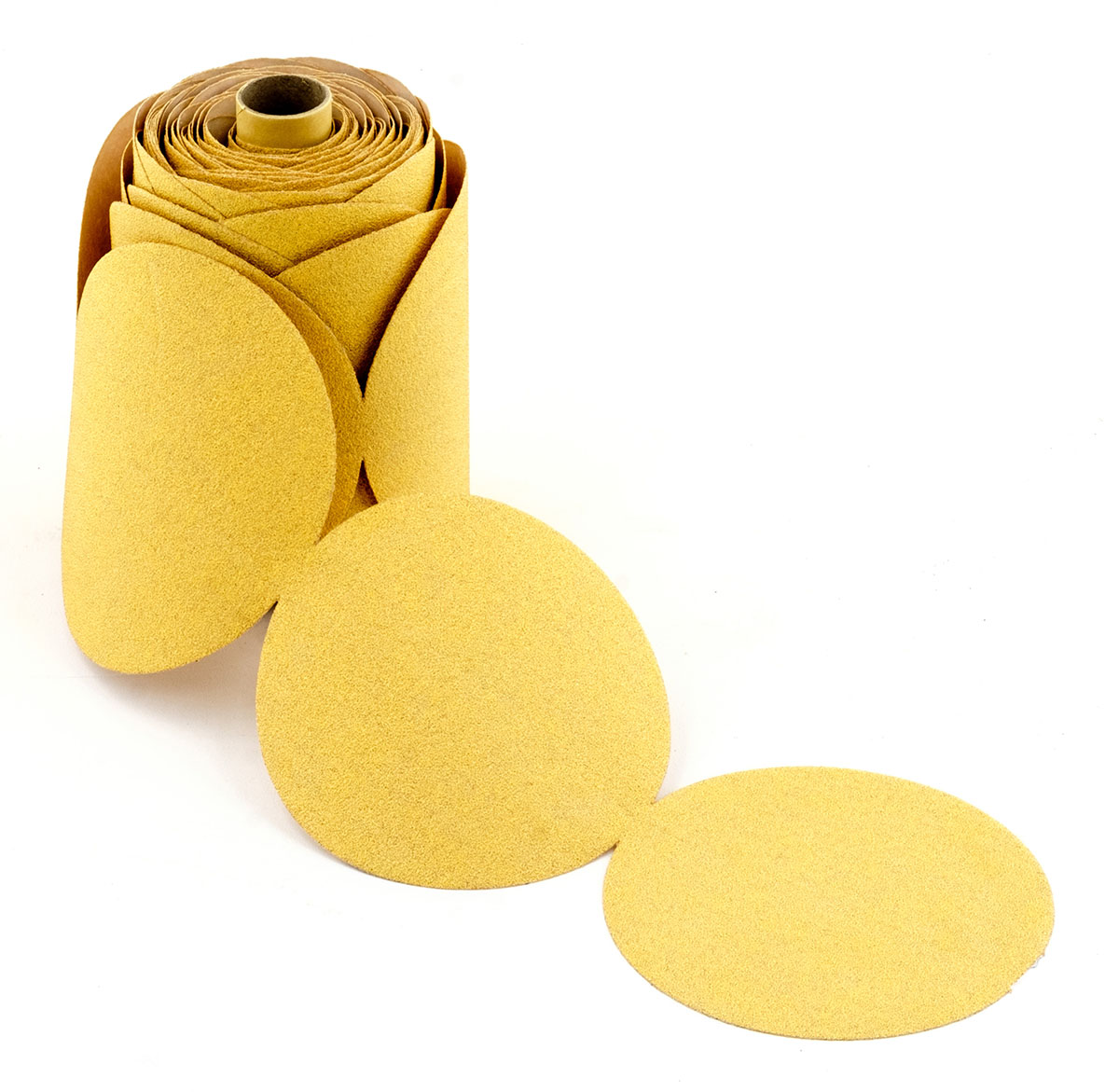
GOLD STEARATED ALUMINUM OXIDE
Economical Paper Disc
- Aluminum oxide grain provides a fast cut with long life, stearate coating and semi open coat structure prevents loading
- 80-150 Grit: “D” – heavy-weight, low flexibility paper backing 180-400 Grit: “C” – medium-weight, low flexibility paper backing
- For automotive body work, removing varnish from wood, sanding fiberglass, and for use on metal
- For use on random orbital or low speed DA sanders – For dry use only
- Available in PSA Disc Rolls
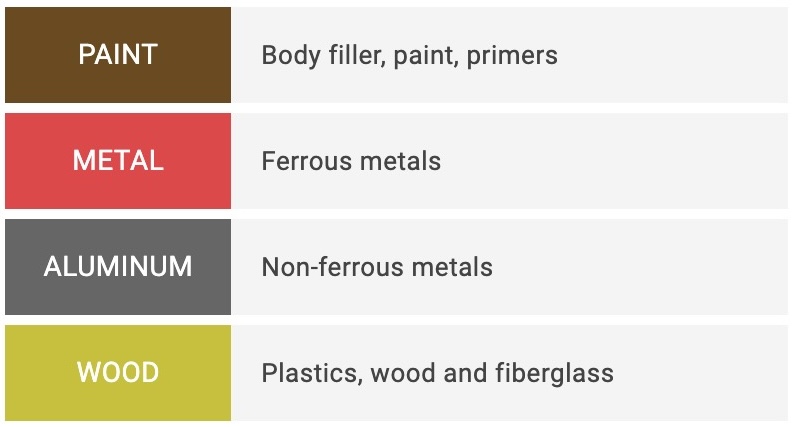
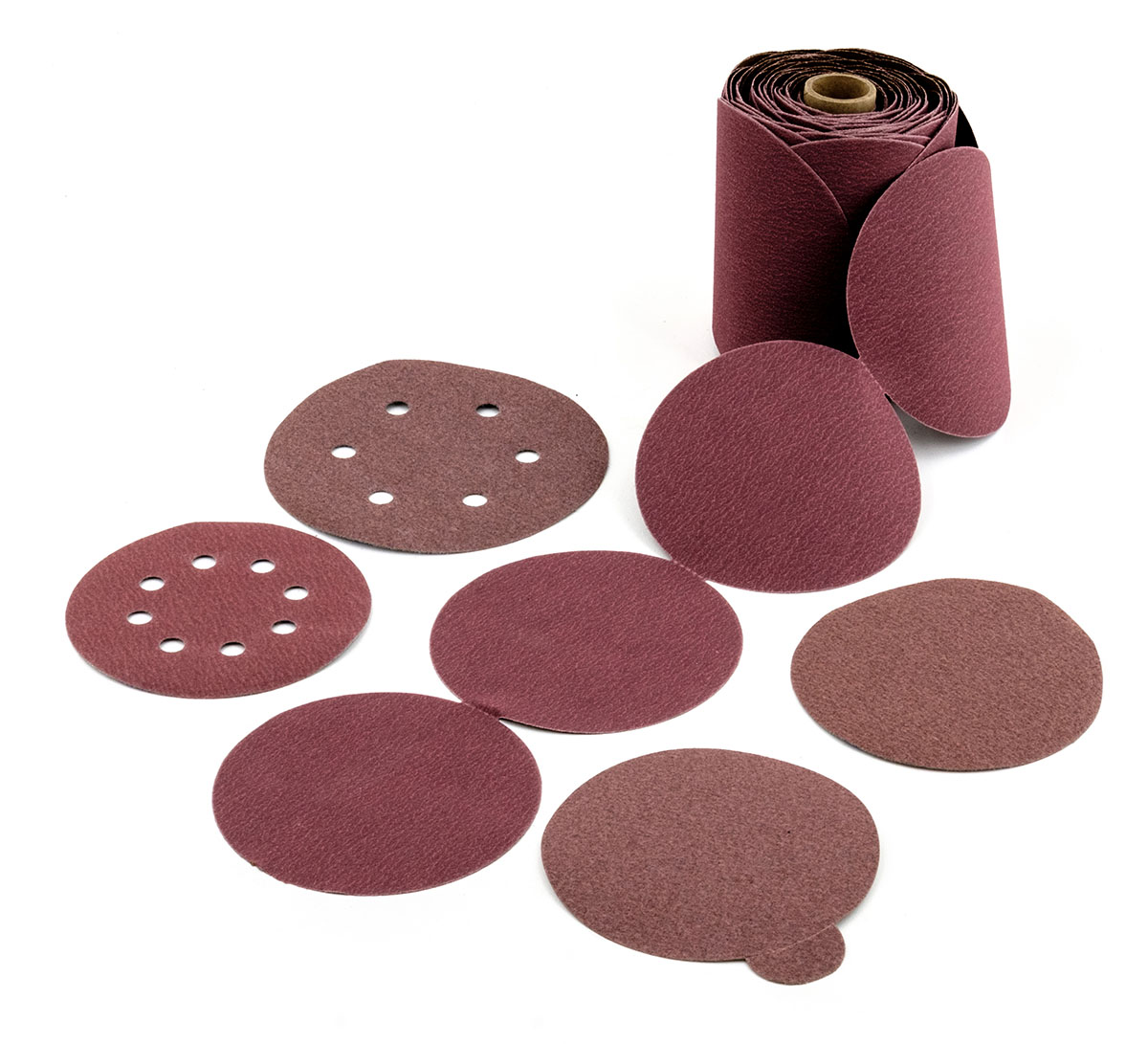
3S STEARATED ALUMINUM OXIDE
Paper Disc for Wood and Bare Metal
- Excels on wood and bare metal surfaces
- Aluminum oxide grain, stearate coating and open coat structure lubricates and prevents loading
- “C” – medium-weight, average flexibility paper backing
- For Dry Use Only
- Available with Hook & Loop Backing or PSA Backing

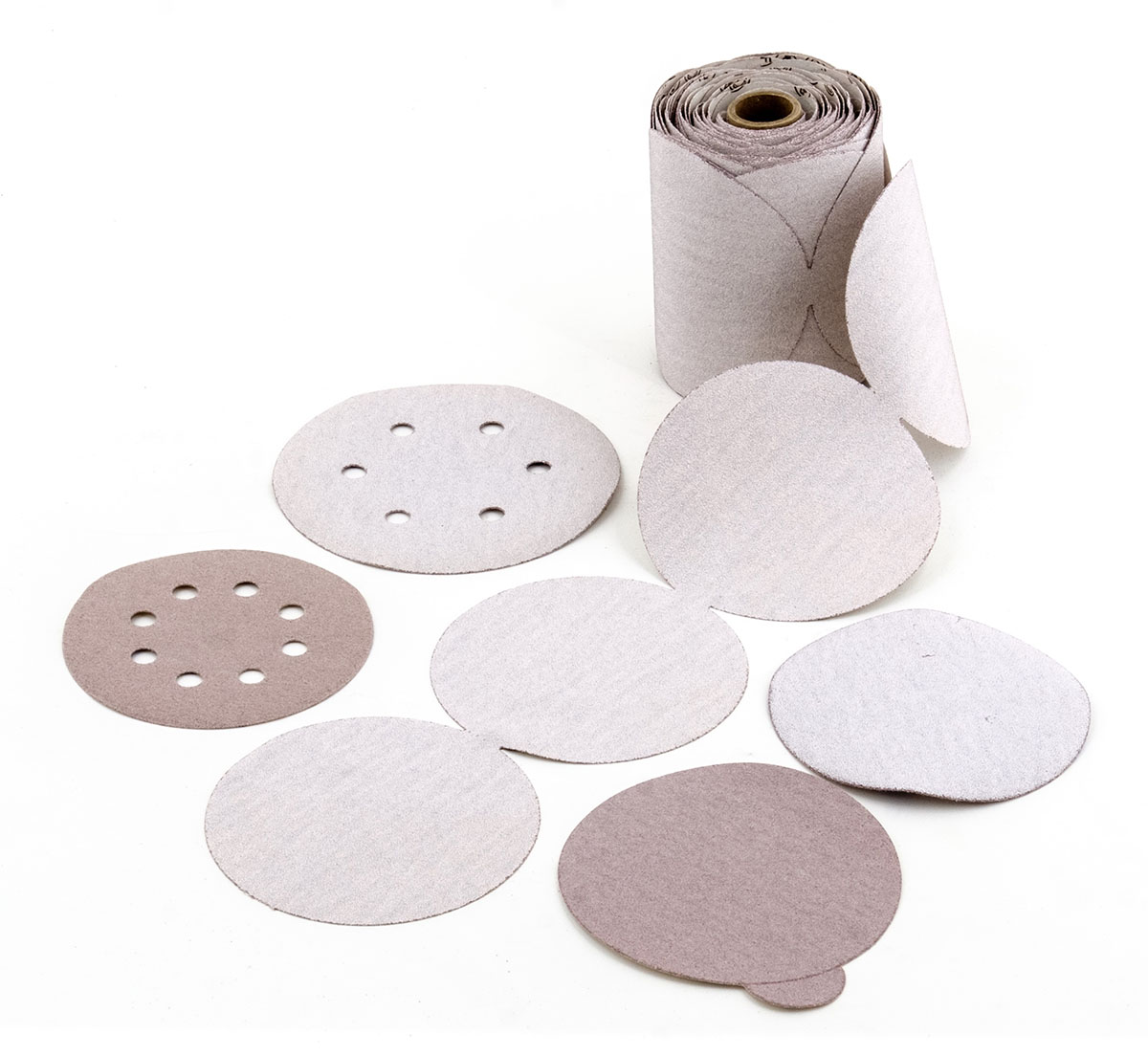
4S PREMIUM STEARATED ALUMINUM OXIDE
Premium Paper Disc for Wood and Primed Surfaces
- Excels on wood and primed surfaces
- Best performing, longest lasting paper disc. Long lasting performance and fast removal rates for fine finishing of auto body, wood, metal, and marine applications
- Premium aluminum oxide grain, premium Stearate coating and open coat structure lubricates and prevents loading. For Dry Use Only
- “C” medium-weight, low flexibility paper backing
- Available with Hook & Loop Backing or PSA Backing

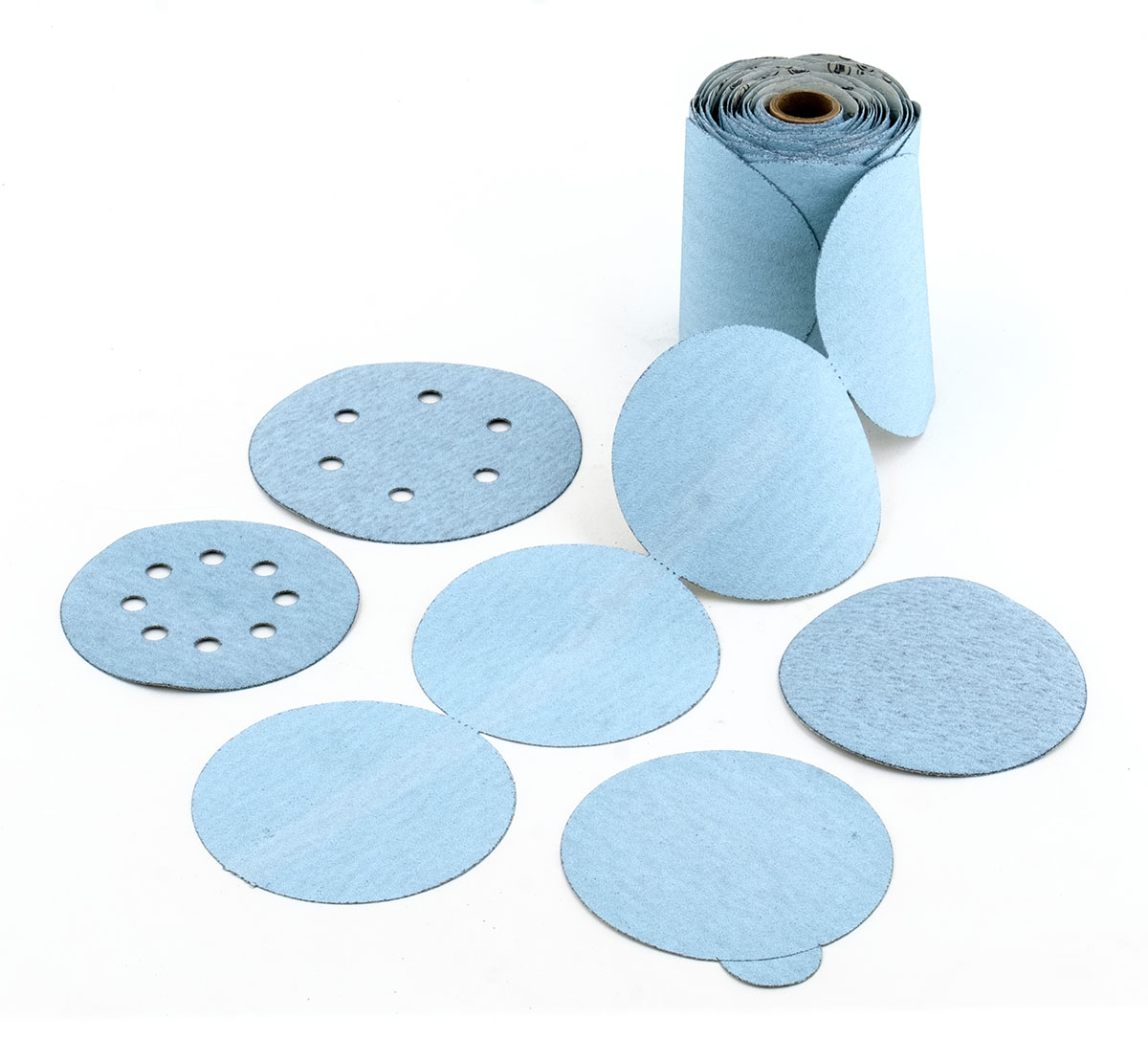
6S PREMIUM STEARATED CERAMIC
High Performance Ceramic Paper Disc
- Best in Class. Fast stock removal with exceptional long life
- Premium Ceramic Grain, premium stearated coating prevents loading
- “C” medium-weight, low flexibility paper backing
- Available with Hook & Loop Backing or PSA Backing

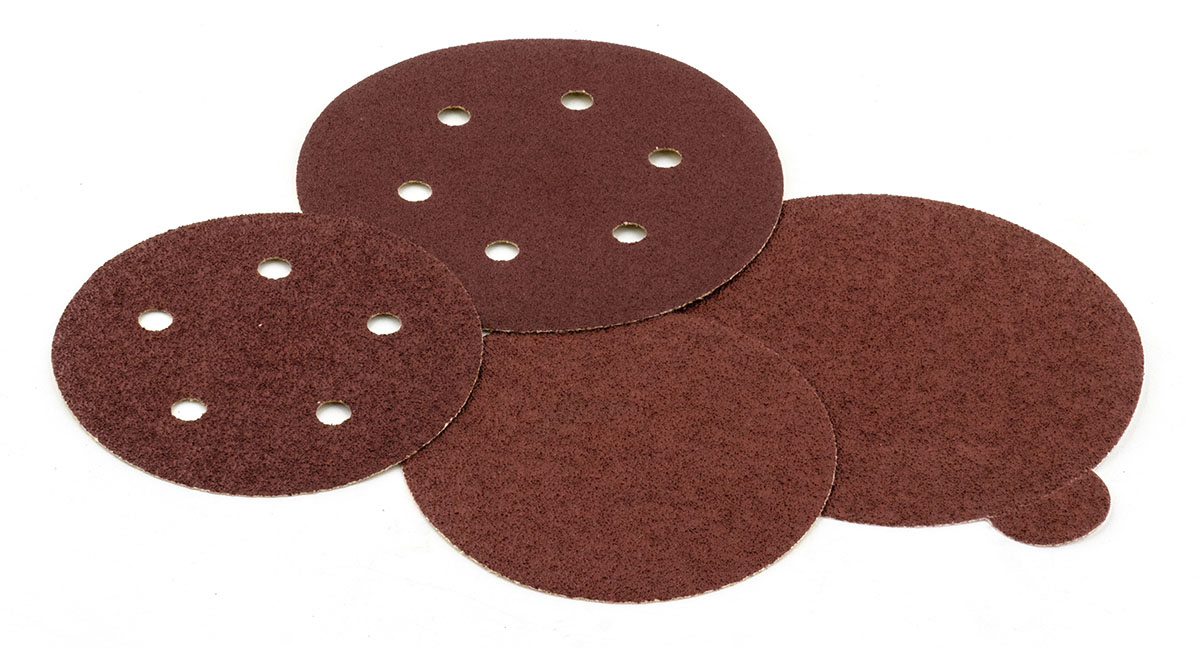
A-E ALUMINUM OXIDE
Heavy Duty Paper Disc
- For aggressive sanding, preparation, and stock removal
- Aluminum oxide grain for material removal, long life and finishing
- E-weight paper reduces torn edges which produce deep, uneven random scratches
- Available with Hook & Loop Backing or PSA Back

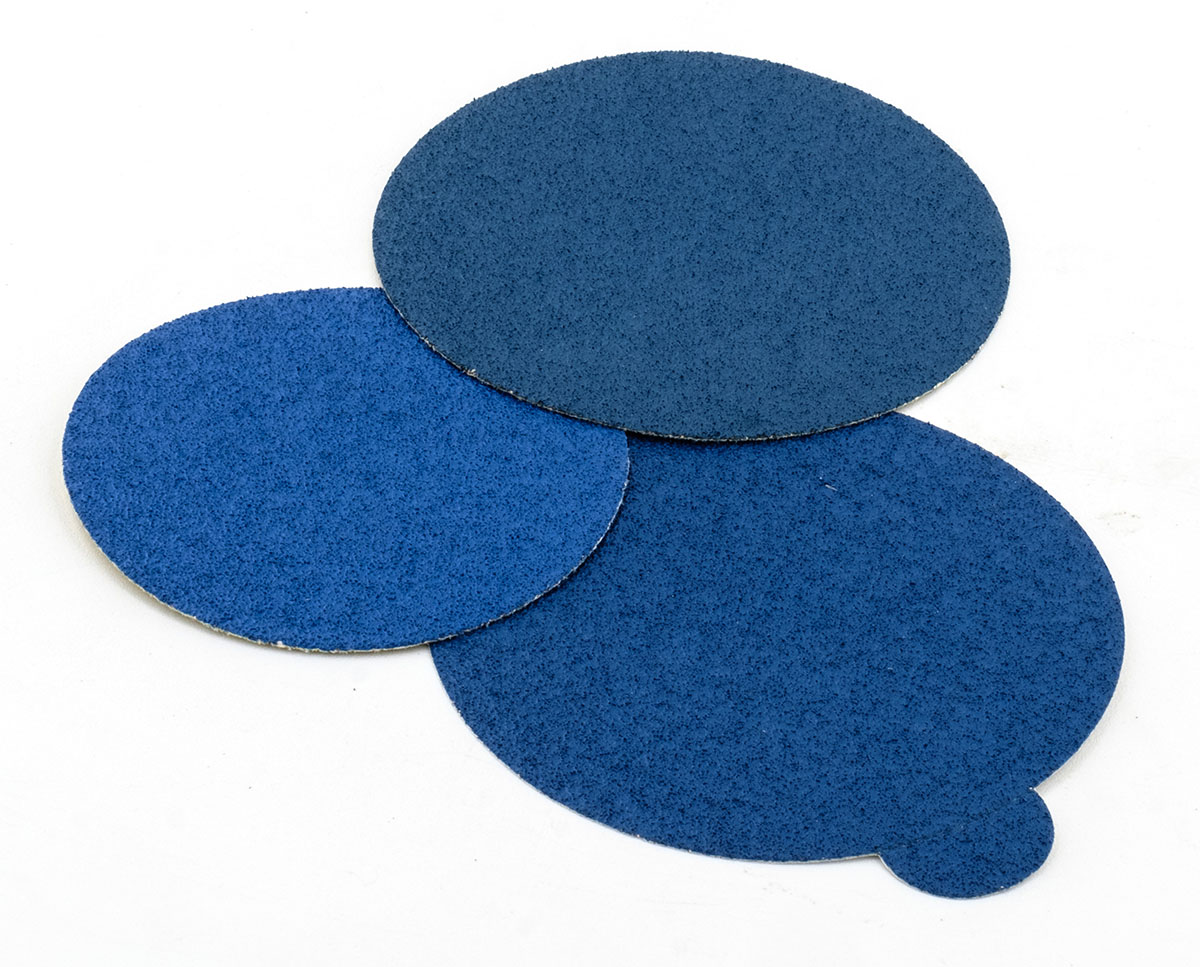
Z-F PREMIUM ZIRCONIUM
Heavy Duty Paper Disc
- Best choice for aggressive sanding, preparation, and stock removal
- Zirconium grain for aggressive material removal and long life
- Heavy, F-weight paper prevents torn edges which produce deep, uneven random scratches
- Available with Hook & Loop Backing or PSA Backing

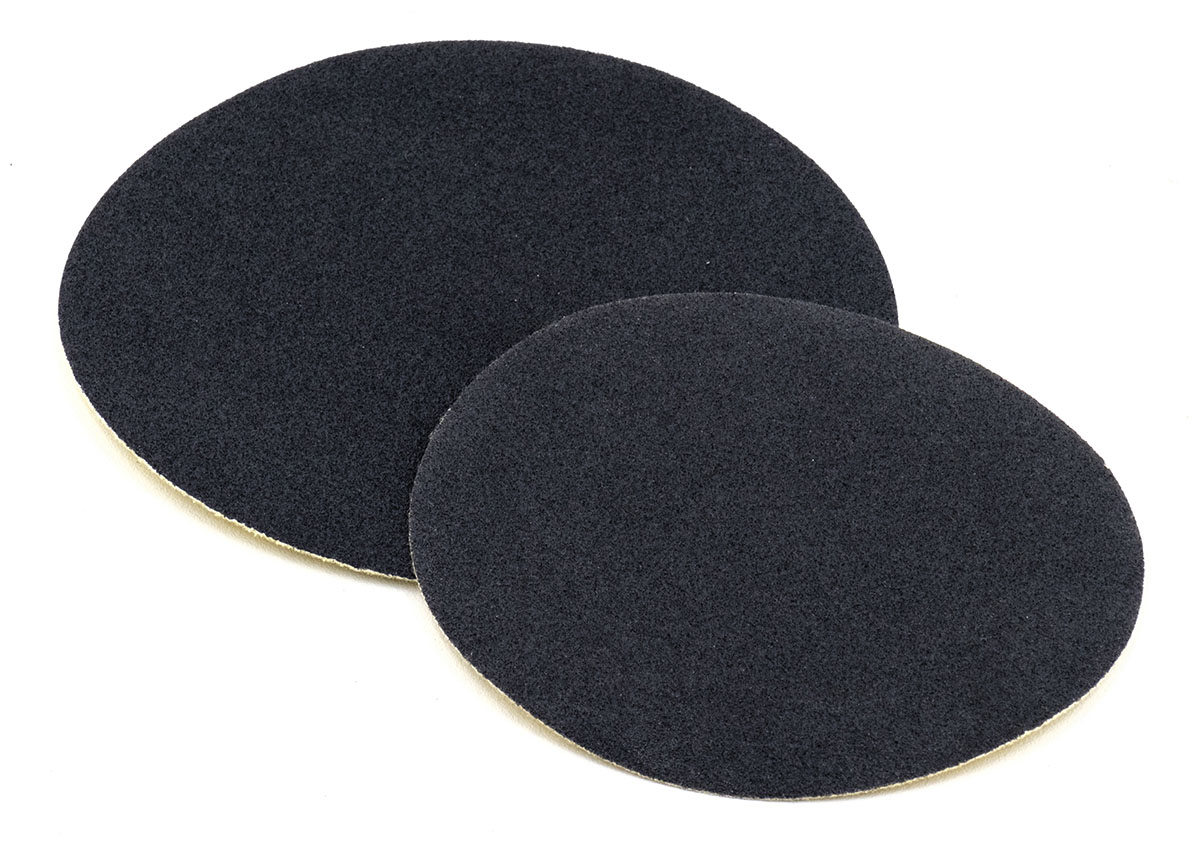
C-E/C-F SILICON CARBIDE
Heavy Duty Paper Disc - Specialty
- Premium Silicon Carbide grain on a tough paper backing
- Designed for fine finishing and long life
- Available with Hook & Loop Backing

Conclusion
In conclusion, in the industrial arena, where projects vary significantly, a tailored approach is indispensable, and the meticulous choice of the right disc becomes instrumental for achieving optimal results. Factors such as grit size, the composition of the abrasive material, backing substrate and the method of how sand paper is secured to the tool are all paramount to surface prepartion success.
If you have any questions or need help selecting the right abrasive for your application, you can always give us a call at (800) 608-5210 or email info@intlairtool.com


